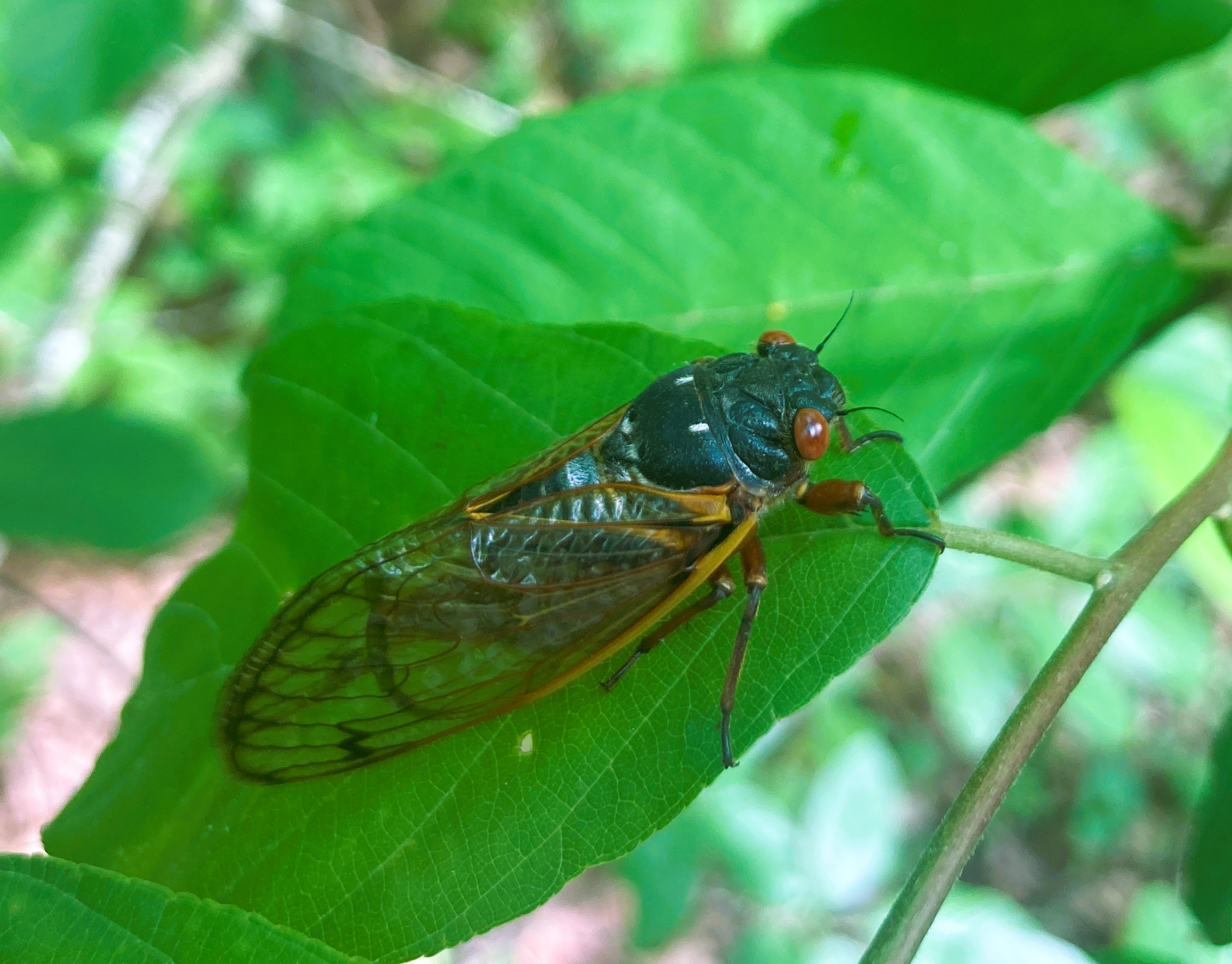Cicada Sightings
Contact
University of Arkansas System Division of Agriculture
Cooperative Extension Service
2301 S. University Ave.
Little Rock, AR 72204

Cicada Sightings
If you have not done so, head out into the woods near you on a sunny day, shut off the car, put down the phone and just listen. You will likely be rewarded with a cacophonous buzzing, purring, whirring screech designed to melt the heart of the female of the species, the periodic cicada. What you are hearing is brood 19 of the 13-year periodic cicada.
I spotted the first emergence holes for the periodic cicada on a woodland trail at about 2,400 feet in the oak forest of Madison County on April 10. The twenty or so holes were about the size of the tip of my index finger and clustered here and there along the trail. Emergence is timed with soil warming. Peak emergence begins following a rainfall when the soil reaches 64 degrees Fahrenheit at about eight inches below the surface. The direction of the hillside slope, the amount of leaf cover and the overall exposure of the site will dictate when emergence occurs. According to a video I watched, several insects can emerge from one hole.
The 13-year periodic cicada and their 17-year cousin both have five instar stages below ground as the nymphs move through their life cycle feeding on the xylem sap of deciduous trees. The difference between the two species is thought to be the length of time required for completion of the second instar stage. When the chubby, flightless pupae emerge from the soil at dusk, they seek out something to climb onto where they affix themselves and complete the process of end-stage maturation. Emergence at dusk is thought to give the flightless nymphs time to make it to a sheltered location while birds are at roost for the night. Once they molt into adults, periodic cicadas conduct all their business during daylight hours and are quiet at night.
It was another three weeks before I noticed the chorus of the cicada song as the males put full effort into attracting the attention to the females. Only the males sing. The females make their presence known by producing a clicking sound. A singing male can be drawn to your hand by snapping your fingers. Because cicadas have no biting mouthparts or stingers, it is perfectly safe to have them crawling on a child’s hand or in your hair.
Adult cicadas have a piercing-sucking mouthpart; a hypodermic-like feeding tube like a mosquito. It was long believed that adult cicadas did not feed during their four-to-six-week-long foray into the light, but it was recently shown that the adults do in fact feed on plant sap. By testing the gut content of adults in a 2021 emergence in a West Virginia apple orchard, apple DNA and a wide variety of other deciduous tree species were detected. Adults that had just finished their molt had no detectable DNA residue in the digestive tract.
Even though the adult cicadas do feed, it is not believed they do much damage in this manner. The most noticeable damage we see is twig dieback in late summer where the females have gouged out a series of divots to lay their eggs. In heavily infested areas this dieback is very noticeable. But, except in the case of a young planting of fruit trees or a few blueberry bushes, tipping a few branch ends does not do any real damage.
The buzz about the 2024 cicada emergence is because this is one of those rare times when a major 13-year and 17-year brood overlap. It last happened in 1803 when Thomas Jefferson was president. Unfortunately, we probably won’t see it happen in Arkansas, because the 17-year species does not occur in large numbers – if at all – in the state. The 17-year species mostly are found in the more northerly states while the 13-year kinds are in the south.
Every August the dogday cicada emerges to remind us that the swelter of summer heat will soon be over. These insects – a bit larger and with a gray-green color as opposed the brown-black body and monster-red eyes of the periodical species – spend as many as five years below ground before emerging but they never developed the synchronous emergence habit of their kin.
The periodic cicadas take advantage of an ecological opportunity by flooding the landscape with so many tasty treats it is impossible for birds, snakes, raccoons, bears and about anything else that lives in the woods to eat them all. Some will survive and reproduce, so the species will be perpetuated.
